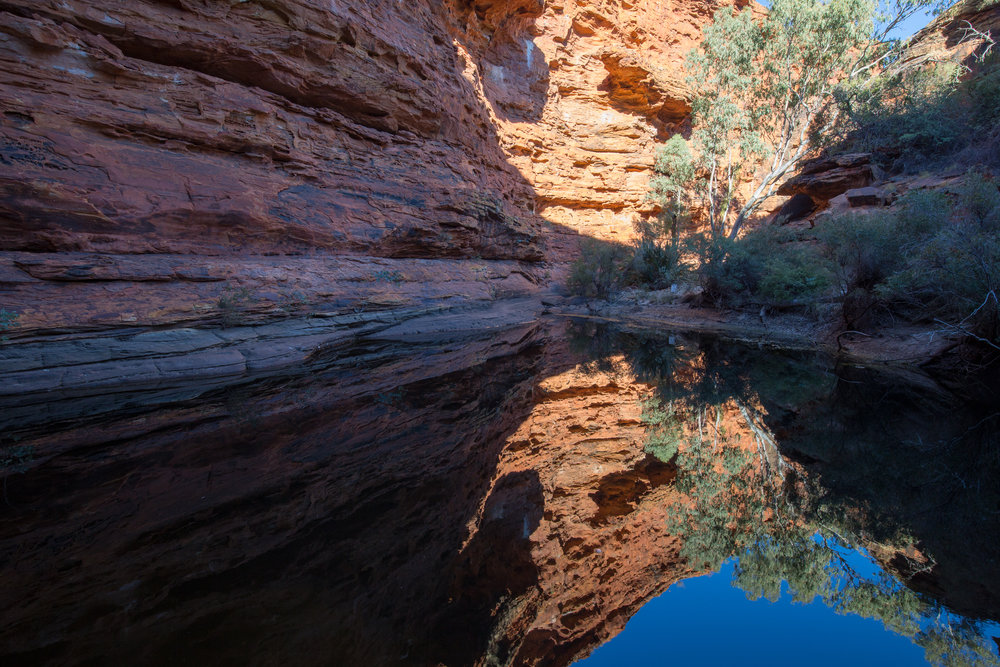
I have lived in Australia for the past thirty-one years, and for the last few I have tried to get away once a year into a remote location to photograph some of Australia’s iconic landscapes. Last year I spent six days in Purnululu National Park, famous for its banded, beehive sandstone formations, and shot predominantly with a Canon 5D Mark III and 16-35mm f/4 and 24-70mm f/4 lenses. I also brought with me my Leica TL and 55-135mm lens as a lightweight telephoto option. But I hedged my bets and also carried an EOS 70-200mm f/4 lens. The combination of the Canon body and three f/4 lenses proved very heavy and became tiresome on long walks in temperatures over 35 degrees during the day.
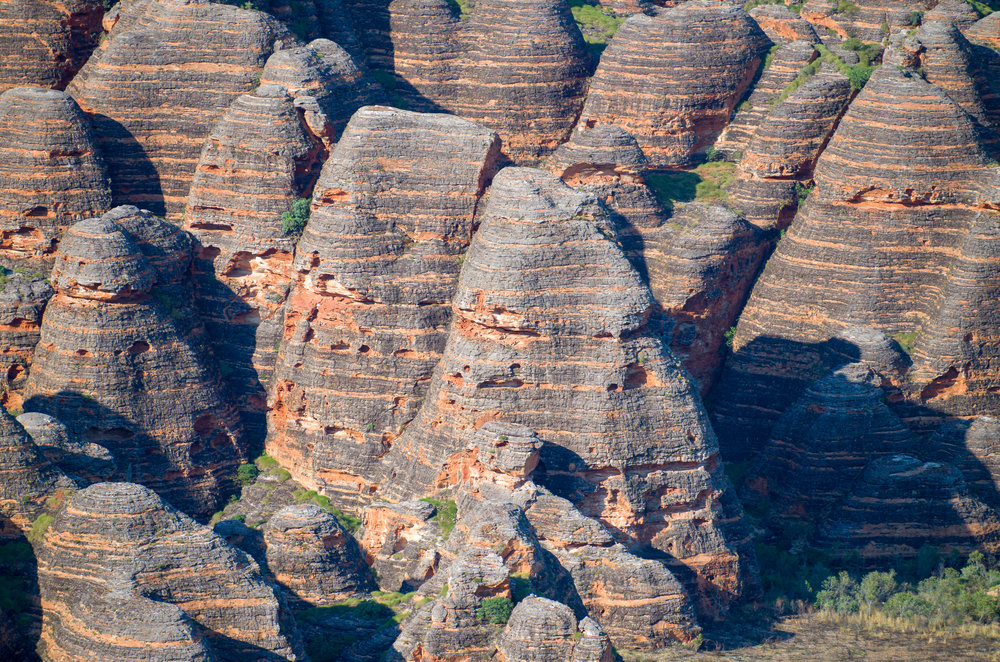
The banded, “beehive” sandstone formations of the Purnululu National Park. Leica TL and 55-135mm lens.
This year I planned to spend four days in early July walking and photographing in Watarrka National Park to the south west of Alice Springs and Kata Tjuta National Park which is to the west of Uluru. For this trip, after much deliberation, I decided to use the Leica CL with the 18-56mm f/3.5-f/5.6 and the 55-135mm f/3.5-f/4.5 lenses as my primary kit. However, as I do not own the 11-23mm lens, I decided to take the Canon 5D III and 16-35mm f/4 as I knew there would be times when I needed the wider angle in the confines of the gorges in both locations. I carried the lot in a WANDRD PRVKE 21 litre backpack which was an excellent choice.
Overall, I can confidently say the Leica CL and lenses make a very versatile, hiking/bush-walking photography kit. The overall outfit is small, light and in most circumstances the lens performance is superb. However, there were a few times when the CL struggled and I will touch on this later.
Kings Canyon, Watarrka
Kings Canyon in Watarrka National Park is one of my favourite locations in Australia. It is a three and a half hour trek south-west of Alice Springs if you choose to drive on the gravel roads. Going by the luxury of bitumen roads adds 150km to the journey and at least another hour. I hadn’t driven the way to Kings Canyon in thirty years, and it was gratifying to find that the red, gravel roads were as rough and corrugated as I remembered them.
My first afternoon was spent photographing the George Gill range as I drove towards Kings Canyon. In the late afternoon, I drove into Kings Canyon expecting that the sun would be shining on the south face of the canyon, based on my research using the TPE app (The Photographers Ephemeris) to determine where the sun would be. But I underestimated the height of the surrounding mesas and found the canyon in deep shadow. So, I retreated to the open plains and took my last shots of the George Gill Range.
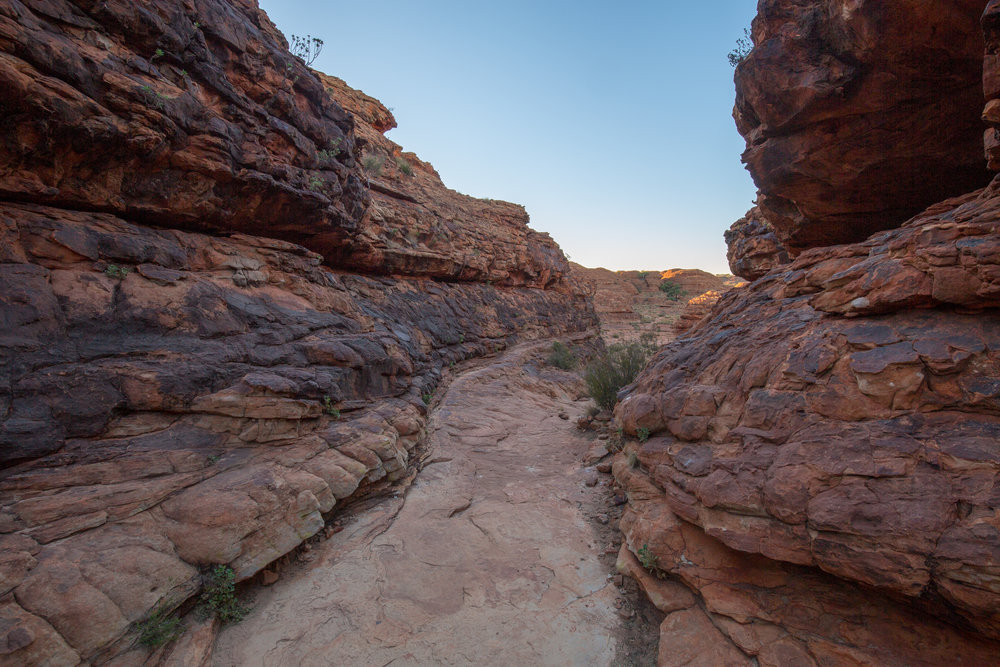
The next morning, I was up at 5 am, drove down to the Kings Canyon carpark and started the canyon rim walk, equipped with a head torch. I was three-quarters of the way up to the rim plateau as the first light was appearing, so I stopped and set up my tripod to capture the pink glow on the sandstone escarpment. It was probably 35 minutes before sunrise, and the Leica struggled to autofocus in the low light. I reverted to manual focus to get the shot. To get a comparison I then mounted the Canon 5D III, and that had no problems at all auto-focusing in the same conditions, and strangely I had no issues with my iPhone X either.
For the rest of the rim walk, I used the Leica CL with the 55-135mm lens for detailed shots and the Canon 5D III for broader vistas. This way I avoided constantly changing lenses in a dusty environment. When I returned to Darwin and loaded my images into Lightroom, I was impressed at the detailed captured by the 55-135mm lens.
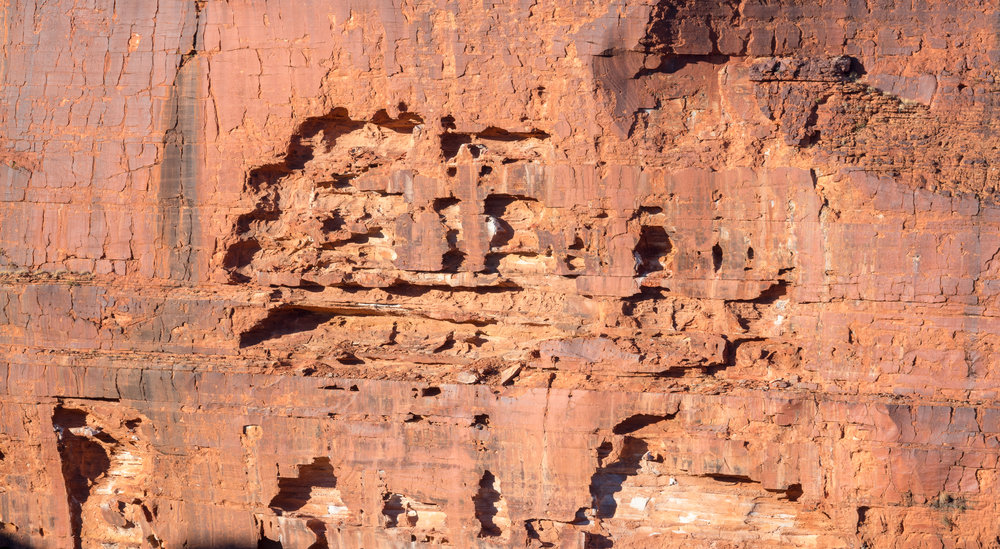
The upper part of King Creek has cut a narrow gorge into the Mereenie sandstone, constrained by a harder layer of mudstone. At this point, the gorge is narrow and maintains water throughout the year, and as a result, a little tropical oasis of ancient cycad palms flourishes on the base of the gorge.
This area is known as the Garden of Eden. But at some point in time, the creek has broken through the mudstone, eroding the much softer Carmichael sandstones underneath. The erosion led to undercutting that eventually resulted in massive rock falls off the Mereenie sandstone. At this transition point the creek (when it is running) goes over a waterfall and the gorge dramatically deepens and broadens to form Kings Canyon itself.
The sheer walls on the upper north and south faces of the canyon, for me, are just stunning. The canyon rim walk takes three to four hours in normal circumstances. I frequently stopped, often waiting for groups of walkers to move out of sight, and, as a consequence, spent close to six hours on the hoof.
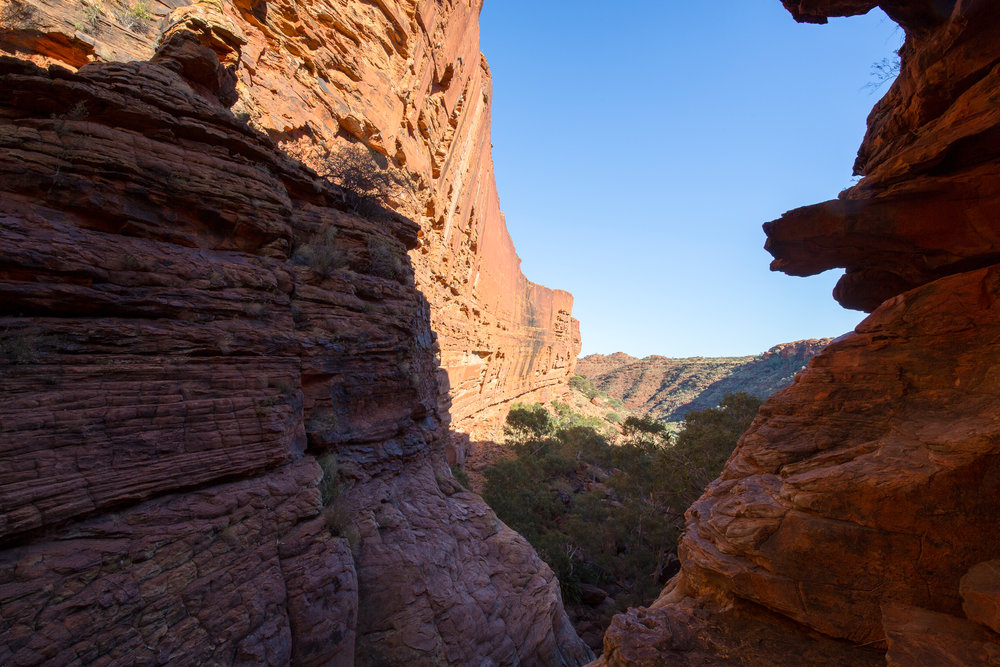

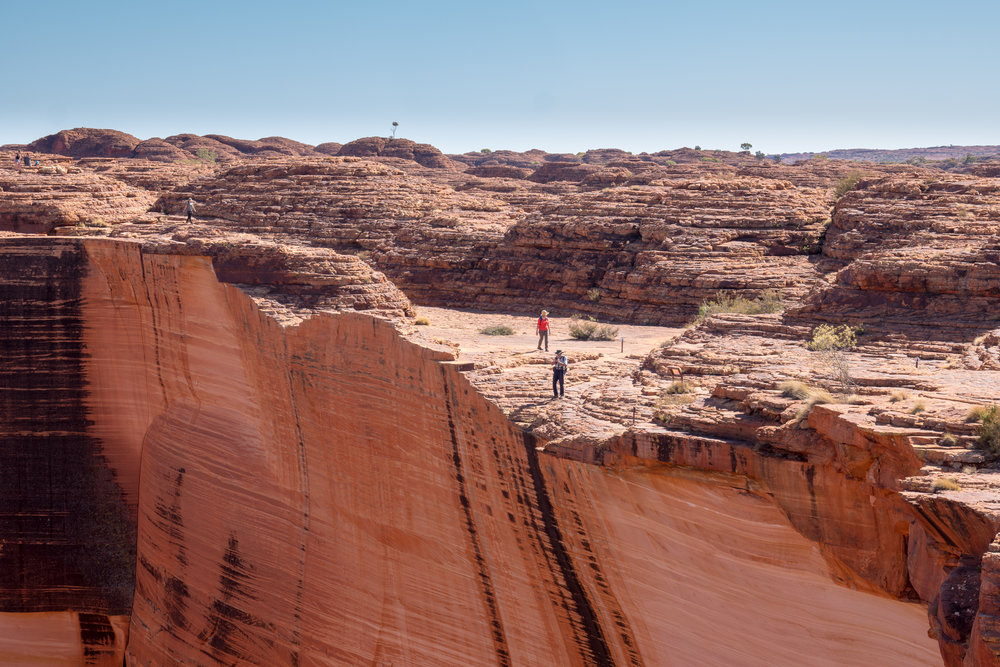
Kata Tjuta
Leaving Kings Canyon, I drove the 300km to Yulara, the tourist village located close to Uluru, which is probably better known as Ayers Rock. I was, however, more interested in the rock formations 50km to the west, known as Kata Tjuta (previously The Olgas). So, the following morning I once again arose well before dawn to drive to a location overlooking Kata Tjuta.
Once there I could clearly see the outline of Uluru, 50km to the east, and decided to start by photographing that. Once again, in little light the Leica CL struggled with autofocus, even though there was a clear silhouette of the rock against the brighter sky. I reverted back to manual focus but then realised that the red focus peaking colour I had selected did not stand out well against the red morning sky.
I abandoned the shot, as the light was changing quickly and I didn’t want to miss Kata Tjuta in all its glory. With the early morning light gently hitting the Kata Tjuta rocks, the Leica CL performed much better. I headed off for breakfast, very happy with the images I had captured, although the minus 3 degrees temperature had taken me by surprise.
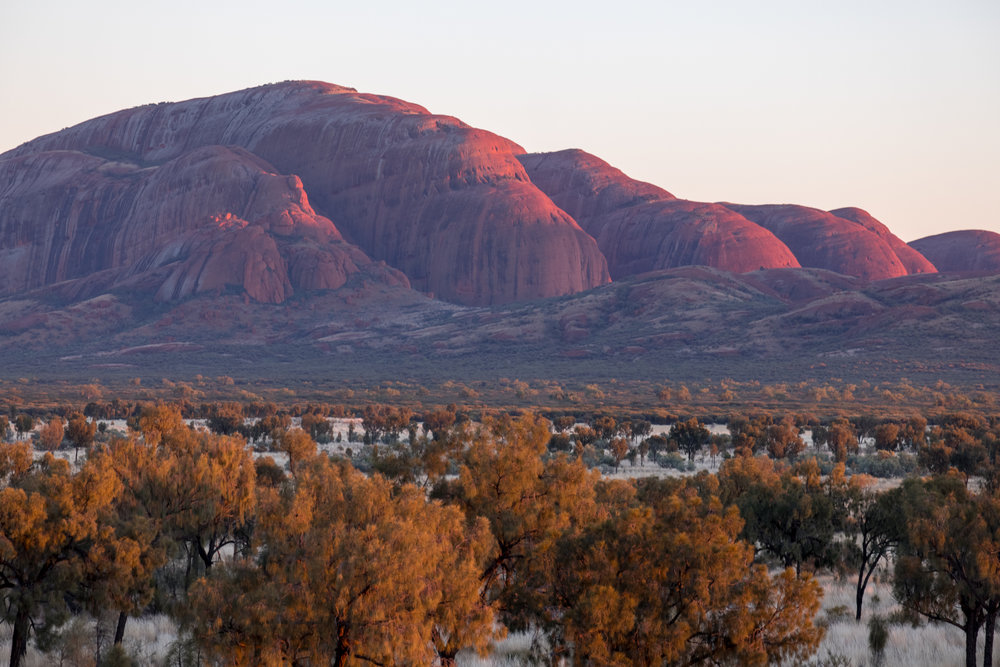
I spent the morning on the Valley of the Winds track, walking through the immense conglomerate rock domes of Kata Tjuta. There were very few people around, and the views are just stunning.

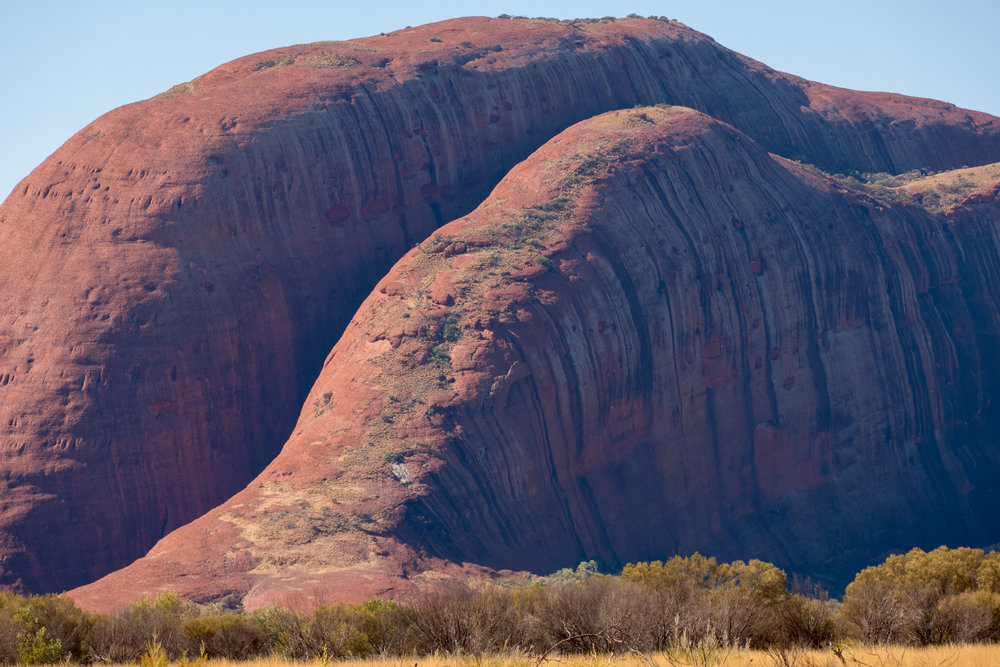
In mid-afternoon, I headed back towards Yulara and decided to photograph the north side of Uluru which was now strongly side lit. The “brain” on the north-east face was probably my favourite feature. But I was dismayed to see so many tourists climbing the rock, despite the indigenous landowners’ pleas for them to respect their culture and not to climb.
That evening I returned to Kata Tjuta to photograph the setting sun and captured some beautiful light on the gently curved rock formations.
-6.jpg)
Uluru
As I drove back towards Yulara I decided to take a short detour and, rather than leave the park, headed for Uluru to capture the rock with the milky way in the background. The Leica TL lenses have no distance markings, and the CL body does not have any focus-distance information on display (unlike the Leica TL), so I wasn’t prepared to risk a series of out-of-focus shots and instead reverted to setting my Canon 16-35mm at infinity and capturing the scene that way. The background glow is the small community of Mutitjulu which is out of bounds to tourists.
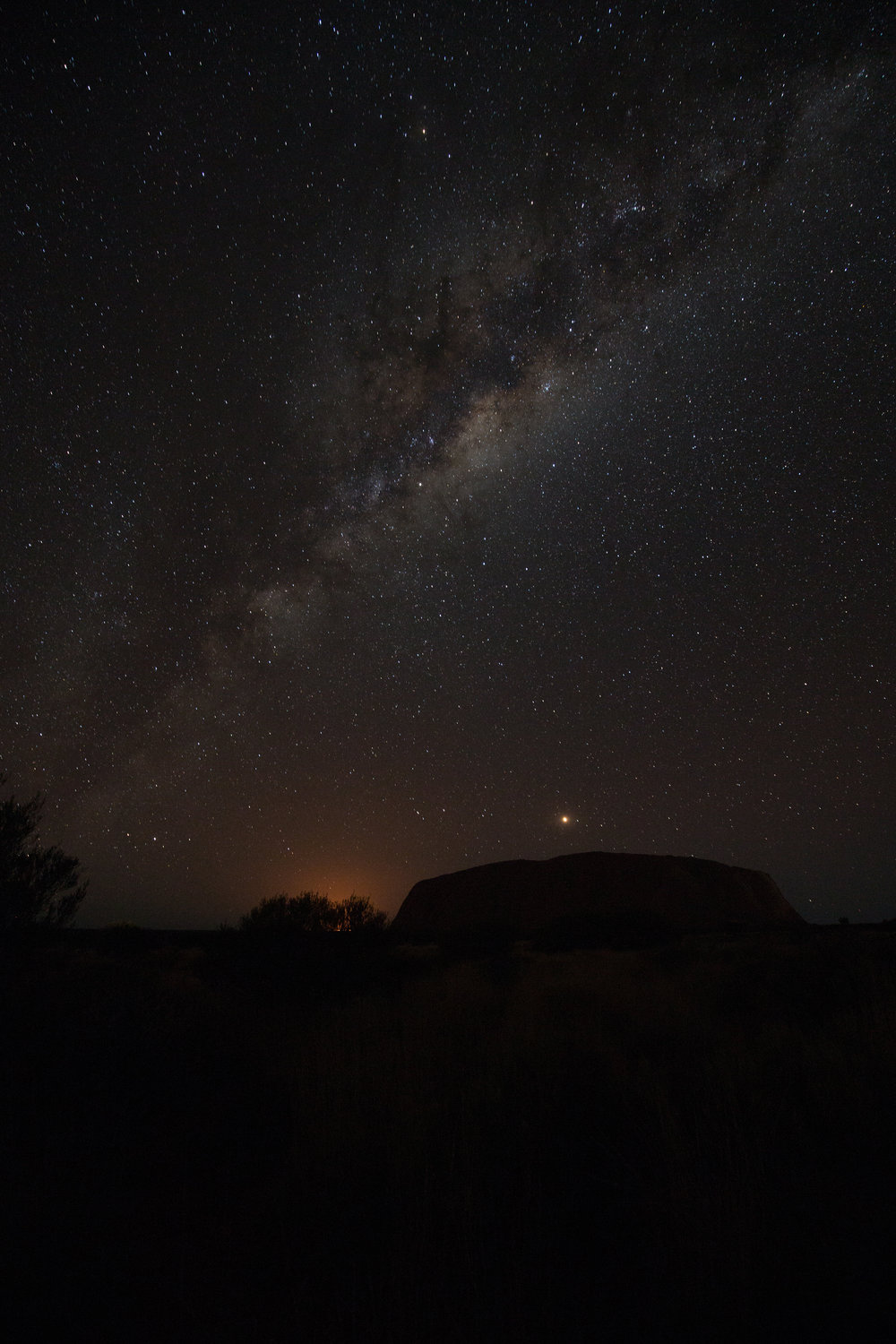
On my last morning, I again arose well before dawn, hoping to capture Uluru in full splendour. The allocated “sunrise viewing area for tourists” appeared to be to be too far south to see the rock bathed in the pre-sunrise light, based on my research in TPE. So, instead, I parked to the north-east of the rock, and all alone I captured a series of beautiful images of the rock in the pre-sunrise light using the Leica CL and 18-56mm lens.
-3.jpg)
I then raced around to the allocated viewing area, and the light there confirmed that I had made the right choice. It was also populated with several hundred tourists, probably slightly disappointed with the light show that morning.
Conclusion
On balance, I made the right decision given the Leica CL’s results, and the next time I will spend more time practising manual focusing before heading into the bush. The light changes so quickly that if you struggle with a camera feature, the chances are you will miss the opportunity that morning.
Some of my other wish list items for Leica CL include:
-
An automatic sensor cleaning function. Having come from the Canon 5D III, I had not encountered sensor dust for nearly six years. I haven’t experienced this since I sold my Leica M8.
-
For my hands, the lack of image stabilisation in the 55-135mm lens is a significant shortfall. When visiting Purnululu, I took a 20-minute helicopter flight over the range, using the Canon 5D III and 24-70mm lens for general shots and the Leica TL with the 55-135mm for detailed shots. The lack of stabilisation meant my hit rate of sharp images with the Leica TL was far lower than I had expected.
-
The focus tracking of the Leica CL with the 55-135mm performs well in good light with subjects approaching the camera. I recently tried to use this outfit to capture magpie geese landing on a billabong around sunset, and again in the low light, the tracking struggled to maintain focus on my selected bird as the flock flew across the sky. I got maybe one in ten in focus. On previous outings, the Canon 5D III with 70-200mm f/4 achieved a much higher hit rate.
-
The Leica TL provides a rudimentary distance scale when focusing manually. At least, it allows you to set the lens at either an approximate hyperfocal distance in the dark or focus at infinity for photographs of the night sky. For some reason, the Leica CL did not inherit this DNA from the TL.
Overall, I have been very impressed with the Leica CL and accompanying lenses. My previous attempt at putting together a small APS-C sized kit was on the Sony NEX 7. The Zeiss Sony 24mm f/1.8 was (like the Leica 23mm f/2) a superb lens but lacked the versatility of a moderate zoom. For that, I purchased the 16-70mm f/4 Zeiss Sony lens and immediately regretted it. The 16-70mm seemed soft even in the f/5.6-f/8 expected sweet spot. By comparison, the Leica 18-56mm is superb.
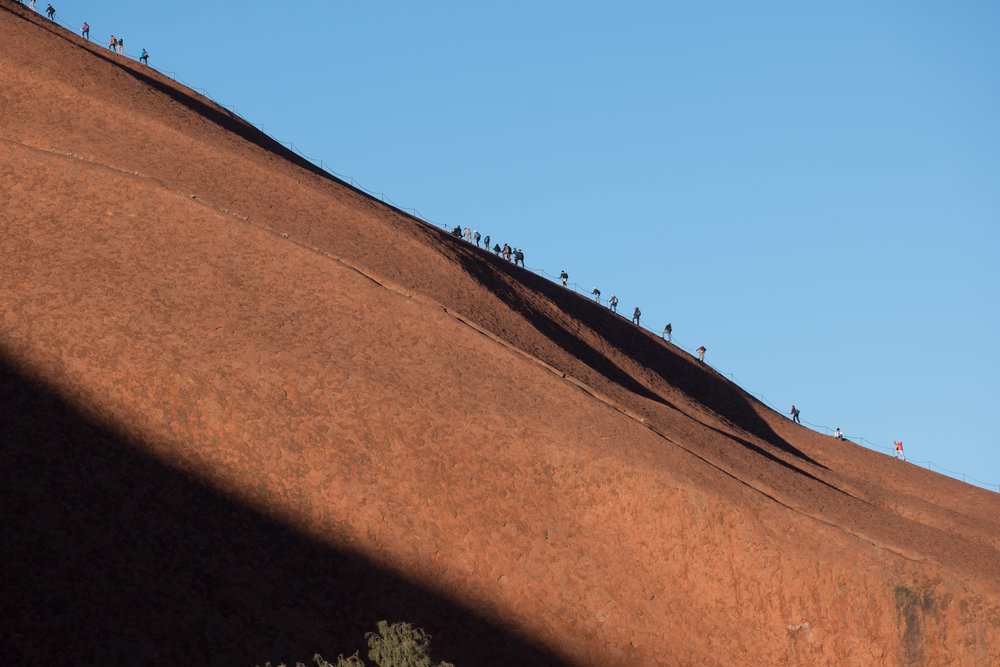
If you are visiting the Northern Territories in Australia, I can highly recommend the detour to visit Watarrka National Park and Kings Canyon, and when visiting Uluru spend at least a day exploring the walking trails around Kata Tjuta.

Tom, Thanks for this fascinating article and photos. I look forward to more articles on your travels. Kevin
Thanks for your comments. Just in the process of moving home, so will work on another post in a few weeks. Lots of great landscape opportunities here in the Northern Territories (NT).
Lovely Photos, Tom. The colours and landscape remind me of Wadi Rum in Jordan which has red rocks and sand. Which reminds me that I must write up a piece on my visit to Jordan while I was living in the Middle East. As for cameras, the smaller the better for me. Focus peaking is not truly reliable. The camera will show colours where it sees contrast, but this does not guarantee the point of focus being where you really want it. It is much better to use a magnification feature along with focus peaking. I find a rangefinder to be much more reliable. In addition, even though I have had a lot of trouble with my eyes (3 operations, but thankfully not in my focussing eye, yet) I find a rangefinder to be more reliable than autofocus.
William
I have seen some great photos of Wadi Rum but haven’t got there yet. It’s on my bucket list with Petra.
I have been using the CL with my 35mm Summicron M lens a bit recently and getting back into manual focusing with magnification. Had some good results so far.
Thanks for your comments.
Thank you for your tour, I always wondered why that area is not more photographed, and featured on different sites. What causes those BeeHives ? I find them fascinating is it wind or erosion.
I am not a geologist, but as I understand it the underlying sandstone is a cream colour. The outer surface has been stained by iron leaching through. Some layers of the sandstone are more porous, that means they retain more water. This had allowed cyanobacteria to grow on the surface giving the banded black colour. The shape of the domes has been sculpted by wind erosion and to some extent rain water run-off. But the domes haven’t been formed by running streams or creeks. Elsewhere, creeks have cut deep, narrow gorges into the Purnululu structure.
Tom, I enjoyed your impressive landscapes but do not envy your burdensome load of equipment. I find manual or the hybrid auto/manual technique compellingly useful. Master that method and it will spare you carrying overlapping equipment.
Very interesting article – a great privlege to be able to share those stunning landscapes, beautiful and weird! Also some valuable indications about gear. I end up wondering whether you prefer the TL to the CL ? I noted with surprise your disappointment with the Zeiss f4/16-70: I have it on my Sony a6000 and no problems about sharpness at all. It stays on the camera all the time and is my favourite multi-purpose kit.
The problem with the Zeus’s f/4 16-70 was it had common poor quality and one had to get a good copy. I had to return 2 before I got a fabulous one. The camera store person later told me they had a whole shipment that was so bad that they sent back. You will see wide ranging reviews on this lens and it is due to severe sample variation. I had the same problem on the Pana Leica 12-60 and had to return multiple copies due to soft image or heavy decentering.
Overall I prefer the CL but is largely because of the built-in EVF. My gripes with the TL were the need for the Visoflex, the black-out between each shot even when "no preview" was selected (this was partly negated with a very fast SD card) and when using the timer function you had to enable it with every shot. I loved the interface of the TL in comparison to the more traditional menus of the CL, so for me the perfect combination would have been the CL form factor with the TL menus. Maybe I was just unlikely to get a poor quality copy of the Zeiss 16-70 ! There was also nothing in the 55-135mm range of comparable size for the Sony system. My feeling is that once Sony established the A7 series it pretty much abandoned any further premium range lenses for APS cameras.